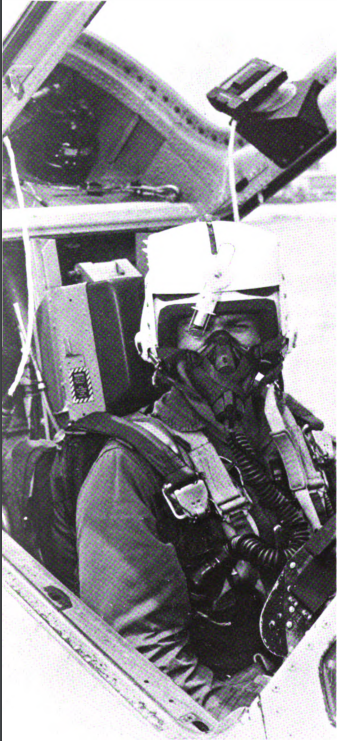In 1968 and 1969, the Army tested the Honeywell electrooptical head-position sensing system for the Cheyenne program. (The principles of such an electrooptical system were mentioned in the discussion of the helmet sight system.) This original Honeywell unit was a first-generation helmet-mounted sight. In 1968 the Air Force sponsored a test of air-to-ground navigation/reconnaissance using a similar unit to pinpoint targets.7 This test successfully used the sight for ground target coordinate determination in low-altitude, high-speed flight. However, helmet weight and center of gravity were problem areas.
The Air Force sponsored further development to reduce the size and bulk and to improve components. The resulting second-generation sight was then loaned to the Navy for a significant F-4B flight test at Point Mugu, California, in June 1969. Navy test pilots concluded that it provided additional target acquisition capability under dynamic high G air-to-air combat conditions. As a result of that and later tests, the Navy contracted through McDonnell Douglas, St. Louis, for a helmet sight capability, called Visual Target Acquisition System, to direct radar and missile target acquisition in certain F-4B and F-4J aircraft.
An improved second-generation sight was flight-tested at Tyndall AFB later in 1969 in F-101 and F-106 aircraft. This important test quantitatively determined the accuracy of this sight under high maneuvering acceleration and wide off-boresight aiming condition.
In the early sights discussed so far, a reticle was projected onto a "granny glass" (combining glass) suspended directly in front of the eye. In a subsequent (1970) Air Force exploratory development, a substantial improvement was made by projecting the reticle directly upon a parabolic helmet visor, thus eliminating any visual obstructions by the suspended granny glass. An experimental version of the helmet-mounted sight with a visor reticle projection was included in flight tests in 1972 by the Air Force at Tyndall AFB and by the Navy in conjunction with its Visual Target Acquisition System testing. The Navy is currently retrofitting the visor reticle into its operational F-4J fleet.

